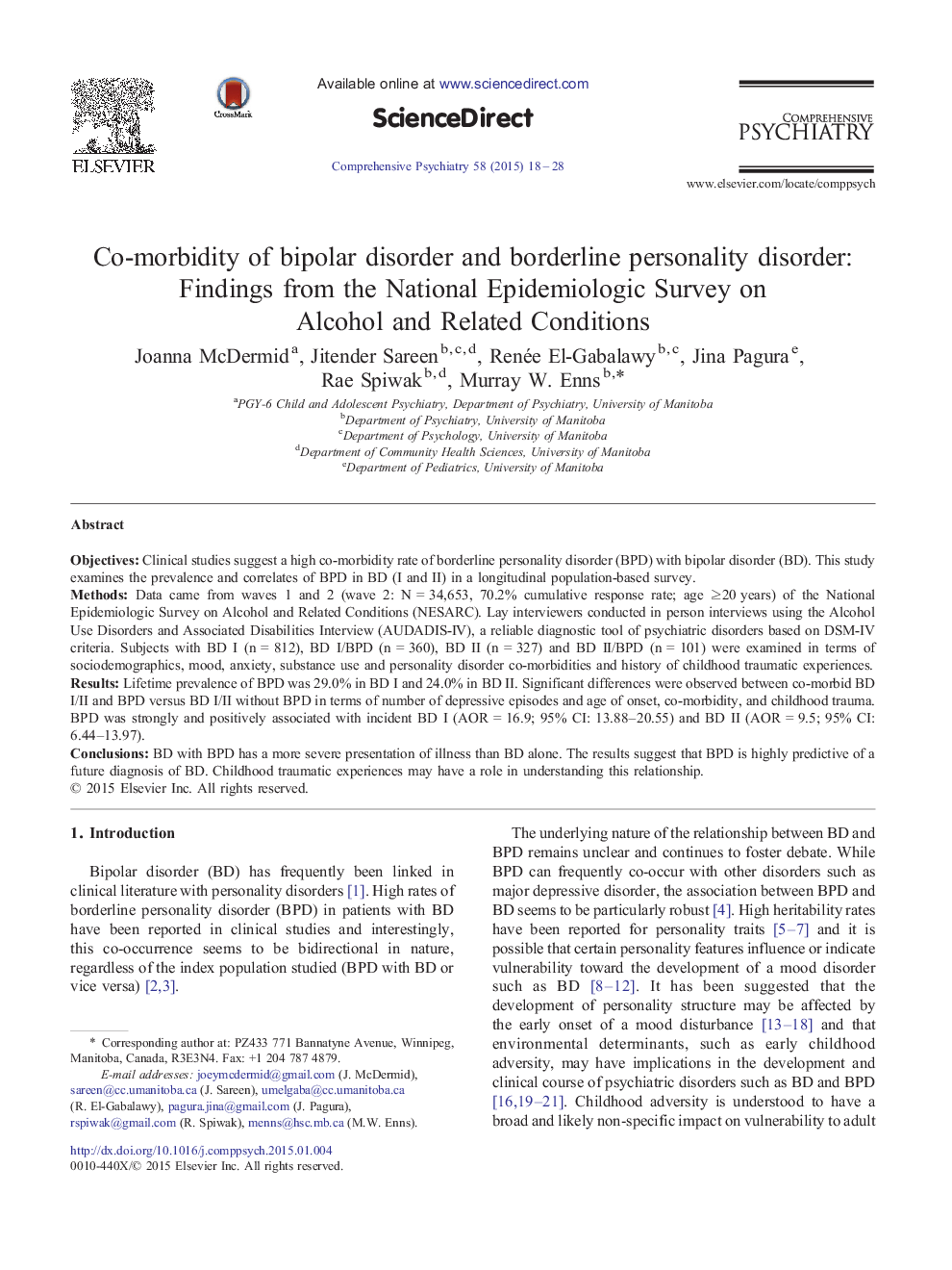| Article ID | Journal | Published Year | Pages | File Type |
|---|---|---|---|---|
| 317378 | Comprehensive Psychiatry | 2015 | 11 Pages |
ObjectivesClinical studies suggest a high co-morbidity rate of borderline personality disorder (BPD) with bipolar disorder (BD). This study examines the prevalence and correlates of BPD in BD (I and II) in a longitudinal population-based survey.MethodsData came from waves 1 and 2 (wave 2: N = 34,653, 70.2% cumulative response rate; age ≥20 years) of the National Epidemiologic Survey on Alcohol and Related Conditions (NESARC). Lay interviewers conducted in person interviews using the Alcohol Use Disorders and Associated Disabilities Interview (AUDADIS-IV), a reliable diagnostic tool of psychiatric disorders based on DSM-IV criteria. Subjects with BD I (n = 812), BD I/BPD (n = 360), BD II (n = 327) and BD II/BPD (n = 101) were examined in terms of sociodemographics, mood, anxiety, substance use and personality disorder co-morbidities and history of childhood traumatic experiences.ResultsLifetime prevalence of BPD was 29.0% in BD I and 24.0% in BD II. Significant differences were observed between co-morbid BD I/II and BPD versus BD I/II without BPD in terms of number of depressive episodes and age of onset, co-morbidity, and childhood trauma. BPD was strongly and positively associated with incident BD I (AOR = 16.9; 95% CI: 13.88–20.55) and BD II (AOR = 9.5; 95% CI: 6.44–13.97).ConclusionsBD with BPD has a more severe presentation of illness than BD alone. The results suggest that BPD is highly predictive of a future diagnosis of BD. Childhood traumatic experiences may have a role in understanding this relationship.
